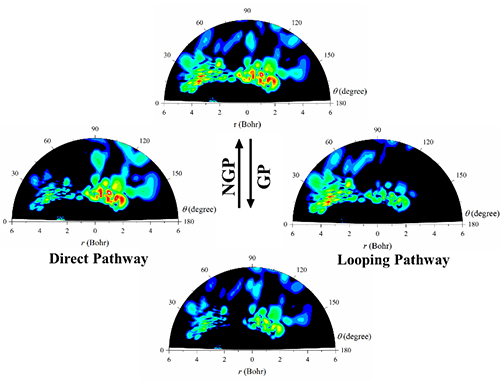A degeneracy or conical intersection occurs in many of the experimentally relevant ultracold (T < 10-3 kelvin, 1 kelvin = -273.15°C) reaction systems, resulting in a geometric phase (GP) that modifies many of the ultracold reaction rates.
Due to its potential application in controlling ultracold chemistry, the so-called GP effects have attracted lots of attention. However, the mechanism of GP effects in ultracold reaction process remains uncleared.
Recently, a research ream led by Prof. ZHANG Dong Hui from the Dalian Institute of Chemical Physics (DICP) of the Chinese Academy of Sciences unveiled the nature of GP effects in the ultracold chemical reaction for the first time.
Their results were published in The Journal of Physical Chemistry Letters on Feb. 26.

Mechanistic insights into Uultracold chemical reactions under the control of the geometric phase (Image by HUANG Jiajun)
The researchers calculated the time-independent scattering wave function of the ultracold O + OH → H + O2 reaction using the newly developed time-dependent wave packet (TDWP) dynamical method.
The analysis of the total scattering wave function revealed the nature of the quantum interference and associated GP effects in this ultracold reaction process for the first time. And this wave function analysis can be generalized to other ultracold reactions that contain a conical intersection.
This study offers a new way for providing mechanistic insight for the dynamics and control of ultracold chemical reactions. (Text by HUANG jiayu)